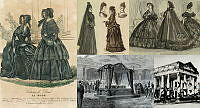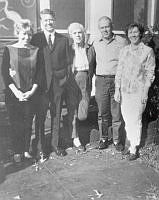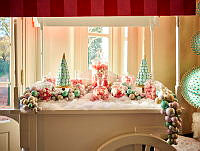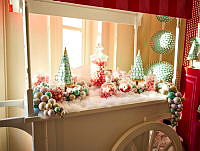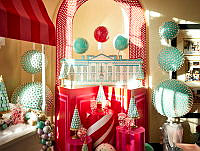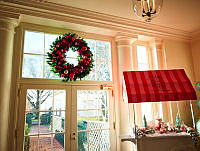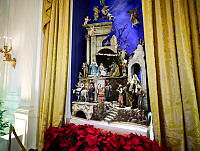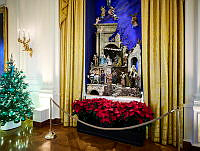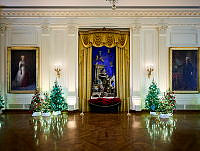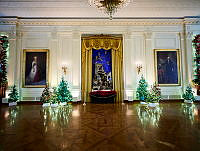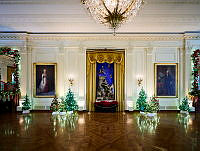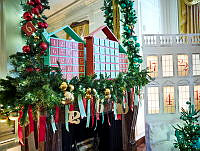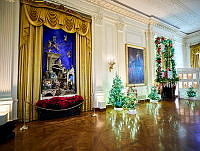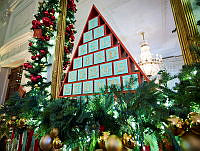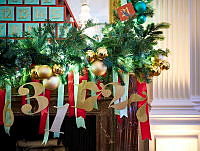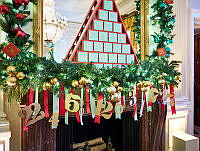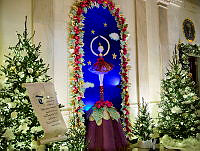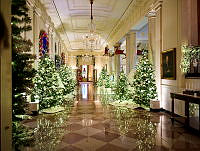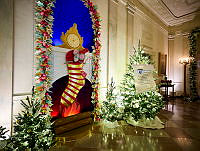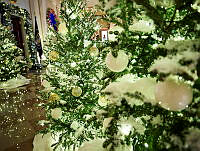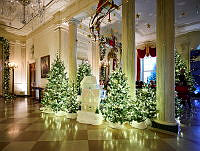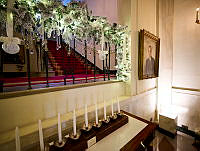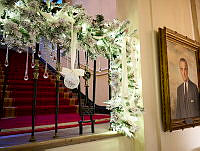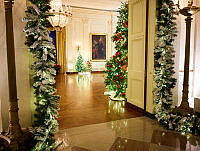An Essay on "The Visit" by Peter Waddell
A War Worker Calls for a Favor, late 1862
Copyright © White House Historical Association. All rights reserved under international copyright conventions. No part of this article may be reproduced or utilized in any form or by any means, electronic or mechanical, including photocopying, recording, or by any information storage and retrieval system, without permission in writing from the publisher. Requests for reprint permissions should be addressed to books@whha.org

Peter Waddell, The Visit, oil on canvas, 36 x 48.
Peter Waddell for the White House Historical AssociationOne of the most revered historic interiors of the White House is the one that President Abraham Lincoln occupied as an office. Located in the east end of the Second Floor, it shared the upstairs with the family's private living quarters. Although intended as a bedroom, it had been used for an office since 1817.
Historical documentation, written and visual, is fairly complete in recording what Lincoln's office was like, and meticulous research has guided the artist in creating this painting. Old photographs show the wallpaper pattern, if not the color; a contemporary drawing shows the furniture, wall maps, and other details, even the table lamp that uses a rubber hose to borrow gas from the chandelier above. The artist found in the records of the Library of Congress that at this time Lincoln had checked out Henry Wadsworth Longfellow's Hiawatha, Frank Forester's Field Sports and Fish and Fishing, and these are duly placed on a stool in the foreground.
On the long, plain wooden conference table, on New Year's Day 1863, Lincoln signed the Emancipation Proclamation, freeing enslaved people in the Confederate states and revitalizing the purpose of the war.
The day represented is late in 1862; Lincoln has a visitor, an old acquaintance, Mary Livermore. She is a public-spirited activist, but more importantly to the president, a strong worker for his election in 1860 and a very effective fundraiser for the United States Sanitary Commission. The Commissions volunteer contribution to the well-being of the soldiers and military hospitals was monumental. She has come to solicit a handwritten draft of the Emancipation Proclamation to auction at a Sanitary Fair fundraiser in Chicago. She was later to report back that the pages of foolscap with Lincolns handwriting brought $3,000, nearly one eighth of the presidents annual salary of $25,000.
This room remained the office of the presidents of the United States until 1902. Twenty-seven years later, President Herbert Hoover designated the room the Lincoln Study, furnishing it with his collection of Lincoln books and pictures. When President Harry S. Truman rebuilt the White House from 1948 to 1952, he re-created the room as the Lincoln Bedroom, which it remains today.











